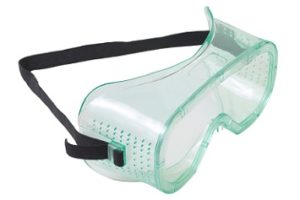March is Save Your Vision Month, and proper eye protection is crucial for workplace safety. Are you following these 7 simple steps to prevent workplace eye injuries?

1. Create a safe work environment. For example:
- Minimize hazards from falling or unstable debris.
- Make sure that tools work and safety features like machine guards are in place.
- Make sure that workers (particularly new ones) know how to use tools properly.
- Keep bystanders out of eye hazard areas.
2. Evaluate safety hazards. OSHA requires you to make hazard assessments to determine when specific PPE is needed. Be sue to:
- Identify the primary eye hazards at the site.
- Identify hazards posed by nearby workers, large machinery, and falling/shifting debris.
3. Make sure workers wear the proper eye protection. OSHA makes you, not employees, responsible for selecting the right eye protection and providing it to employees. Be sure to select the appropriate Z87 eye protection for each eye hazard in your workplace.
4. Make sure employees inspect eye protection before each use. Damaged or worn eyewear, or eyewear that doesn’t fit properly, won’t protect adequately.
- Teach employees how to inspect eye protection.
- Have supervisors check to be sure employees follow inspection rules.
- Show workers how to ensure eye protection fits properly and will stay in place.
- Explain how to clean and how to store eye protection to prevent damage.
5. Require the use of safe work practices. Teach employees to always use caution while they work. For example:
- Always wear assigned eye protection, even if the job will “only take a minute.”
- Brush, shake, or vacuum dust and debris from hardhats, hair, forehead, or the top of the eye protection before removing the protection.
- Don’t rub eyes with dirty hands or clothing.
- Clean eyewear regularly.
6. Make it easy for employees to replace worn or damaged eye protection. Explain the circumstances in which eye protection should be replaced. Use samples of damaged equipment to make your point. Then explain the procedure for exchanging PPE.
7. Prepare for eye injuries and first aid needs. Have an eyewash station near eye hazard areas, or make sure bottles of sterile solution are on hand. Teach employees first aid for eye injuries.
